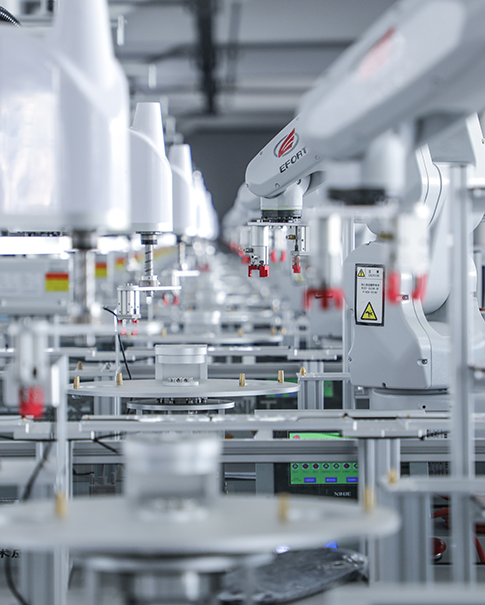In today's rapidly evolving industrial landscape, automation technology is widely regarded as a key driver for enhancing production efficiency and reducing costs. However, as more and more companies integrate automation technologies into their production lines, some industry giants have uncovered the limitations of full automation. From Schneider Electric to ABB, from Heima Programmer to Siemens, these companies have gradually realized that over-reliance on robotic technology not only fails to deliver the expected benefits but may also give rise to a host of new issues.
Schneider Electric, a leader in industrial automation, has been actively promoting the development of open automation in recent years. Open automation aims to break the closed nature of traditional automation systems and enhance the flexibility and efficiency of industrial processes through characteristics such as "reusability," "portability," "reconfigurability," and "interoperability." However, Schneider Electric has also recognized that traditional automation systems have many limitations, such as system closure and deep integration of software and hardware, leading to severe data silo phenomena and difficulties in achieving integration of IT and OT. These issues not only restrict the free flow of data but also hinder the timely deployment of emerging technologies such as artificial intelligence.
Through its EcoStruxure open automation platform, Schneider Electric has gradually addressed these issues. The application of this platform in multiple industries (such as food and beverage, logistics, and environmental utilities) has shown that open automation can significantly improve production efficiency and reduce engineering and maintenance costs. However, this transformation process has not been smooth sailing. In practice, Schneider Electric has found that full automation still has obvious limitations when dealing with complex and changing production demands. For example, in some highly customized production scenarios, the flexibility and adaptability of human workers are irreplaceable by robots.
ABB, a global leader in industrial robotics, has also been exploring the boundaries of automation technology. ABB's YuMi collaborative robot, designed to enhance production efficiency and flexibility through human-robot collaboration, embodies the concept of having robots work side by side with human workers while ensuring the safety of personnel in the vicinity. This human-robot collaboration model not only boosts production efficiency but also improves product quality and reduces waste.
However, ABB has also realized that full automation is not applicable in certain situations. For instance, in small parts assembly lines, although robots can achieve high-precision operations, the tactile sense and spatial awareness of human workers remain indispensable. Moreover, in the deep integration with PLCs (Programmable Logic Controllers), ABB has found that while automation systems can achieve efficient production processes, human intervention is still required when dealing with complex and changing production demands.
Heima Programmer's experience in the field of automated testing has also revealed the limitations of full automation. Despite the significant advantages of automated testing in improving testing efficiency and freeing up human resources, it also has some obvious disadvantages. For example, automated testing requires high technical skills from the testing team and cannot completely replace manual testing in finding all issues. In addition, the development of automated testing scripts requires a considerable amount of time, and the maintenance cost of testing scripts is also high when products are rapidly iterated.
Heima Programmer points out that although automated testing can simulate complex testing scenarios, manual testing is still needed in some cases to ensure software quality. This indicates that even in highly automated testing environments, the professional skills and experience of humans are still indispensable.
Siemens, a leader in industrial automation and digital transformation, has also been exploring the boundaries of automation technology. Siemens, in collaboration with companies like ABB, has driven the deep integration of automation systems with PLCs. This integration not only improves production efficiency but also achieves a digital twin closed loop from the workshop to the cloud.
However, Siemens has also realized that full automation has limitations when dealing with complex and changing production demands. For example, in industries such as automotive manufacturing, 3C electronics, and food and pharmaceuticals, although automation systems can achieve efficient production processes, human intervention is still needed in some cases. Moreover, in practice, Siemens has found that full automation also faces challenges in data processing and analysis. For example, the large amount of data generated by automation systems requires professional data analysis technology and personnel, which ordinary users may lack.
Through the practices of Schneider Electric, ABB, Heima Programmer, and Siemens, we can see that although full automation has significant advantages in some areas, it still has obvious limitations when dealing with complex and changing production demands. The experience of these industry giants shows that human-robot collaboration and hybrid models are often the best choices for achieving efficient production. In the future, as industrial automation and digital transformation continue to evolve, companies need to find the right balance between human intelligence and robotic efficiency to create more adaptable and resilient manufacturing processes.
Email us
Reply within one working dayVisit us
32D Guomao Building, No.388, Hubin South Road, Siming DistrictDisclaimer : Salesplc sells new and surplus products and develops channels for purchasing such products. This website has not been approved or recognized by any of the listed manufacturers or trademarks. Salesplc is not an authorized distributor, dealer, or representative of the products displayed on this website. All product names, trademarks, brands, and logos used on this website are the property of their respective owners. The description, explanation, or sale of products with these names, trademarks, brands, and logos is for identification purposes only and is not intended to indicate any association with or authorization from any rights holder.
Copyright @2024 SalesPlc Limited. Sitemap
/ Blog
/ XML
/ Terms And Conditions
/ Privacy Policy
 Network Supported
Network Supported
